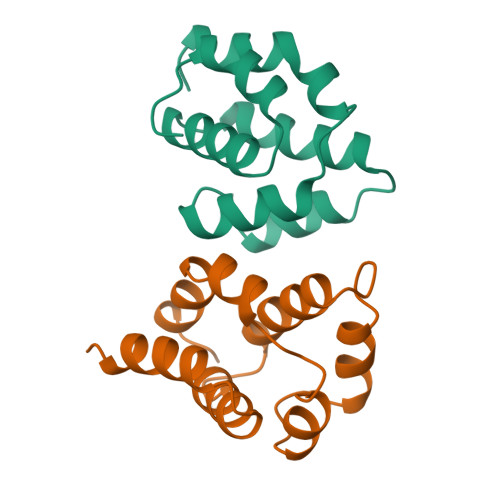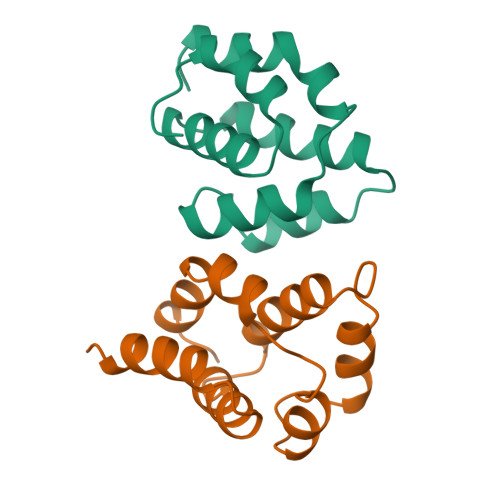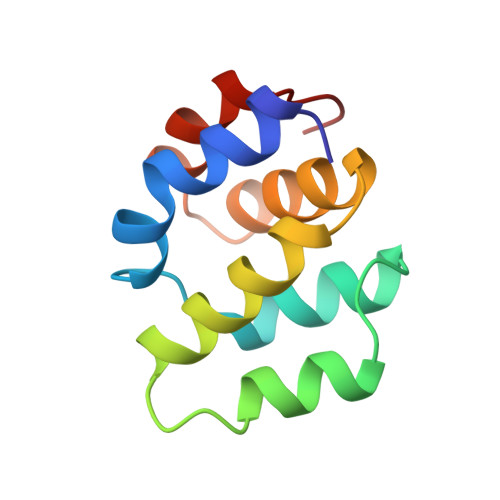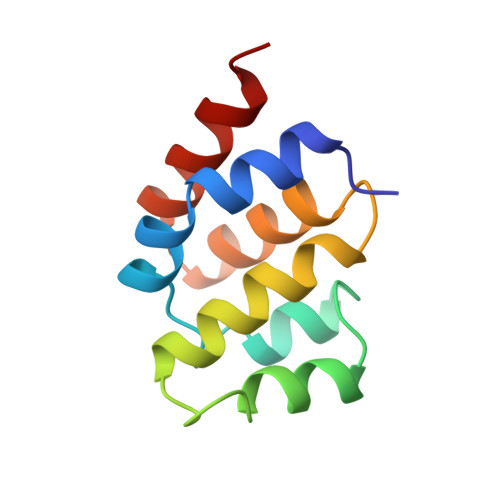Structural basis of procaspase-9 recruitment by the apoptotic protease-activating factor 1.
Qin, H., Srinivasula, S.M., Wu, G., Fernandes-Alnemri, T., Alnemri, E.S., Shi, Y.(1999) Nature 399: 549-557
- PubMed: 10376594
- DOI: https://doi.org/10.1038/21124
- Primary Citation of Related Structures:
2YGS, 3YGS - PubMed Abstract:
Caspase-9-mediated apoptosis (programmed cell death) plays a central role in the development and homeostasis of all multicellular organisms. Mature caspase-9 is derived from its procaspase precursor as a result of recruitment by the activating factor Apaf-1. The crystal structures of the caspase-recruitment domain of Apaf-1 by itself and in complex with the prodomain of procaspase-9 have been determined at 1.6 and 2.5 A resolution, respectively. These structures and other evidence reveal that each molecule of Apaf-1 interacts with a molecule of procaspase-9 through two highly charged and complementary surfaces formed by non-conserved residues; these surfaces determine recognition specificity through networks of intermolecular hydrogen bonds and van der Waals interactions. Mutation of the important interface residues in procaspase-9 or Apaf-1 prevents or reduces activation of procaspase-9 in a cell-free system. Wild-type, but not mutant, prodomains of caspase-9 completely inhibit catalytic processing of procaspase-9. Furthermore, analysis of homologues from Caenorhabditis elegans indicates that recruitment of CED-3 by CED-4 is probably mediated by the same set of conserved structural motifs, with a corresponding change in the specificity-determining residues.
Organizational Affiliation:
Department of Chemistry, Princeton University, New Jersey 08544, USA.



















